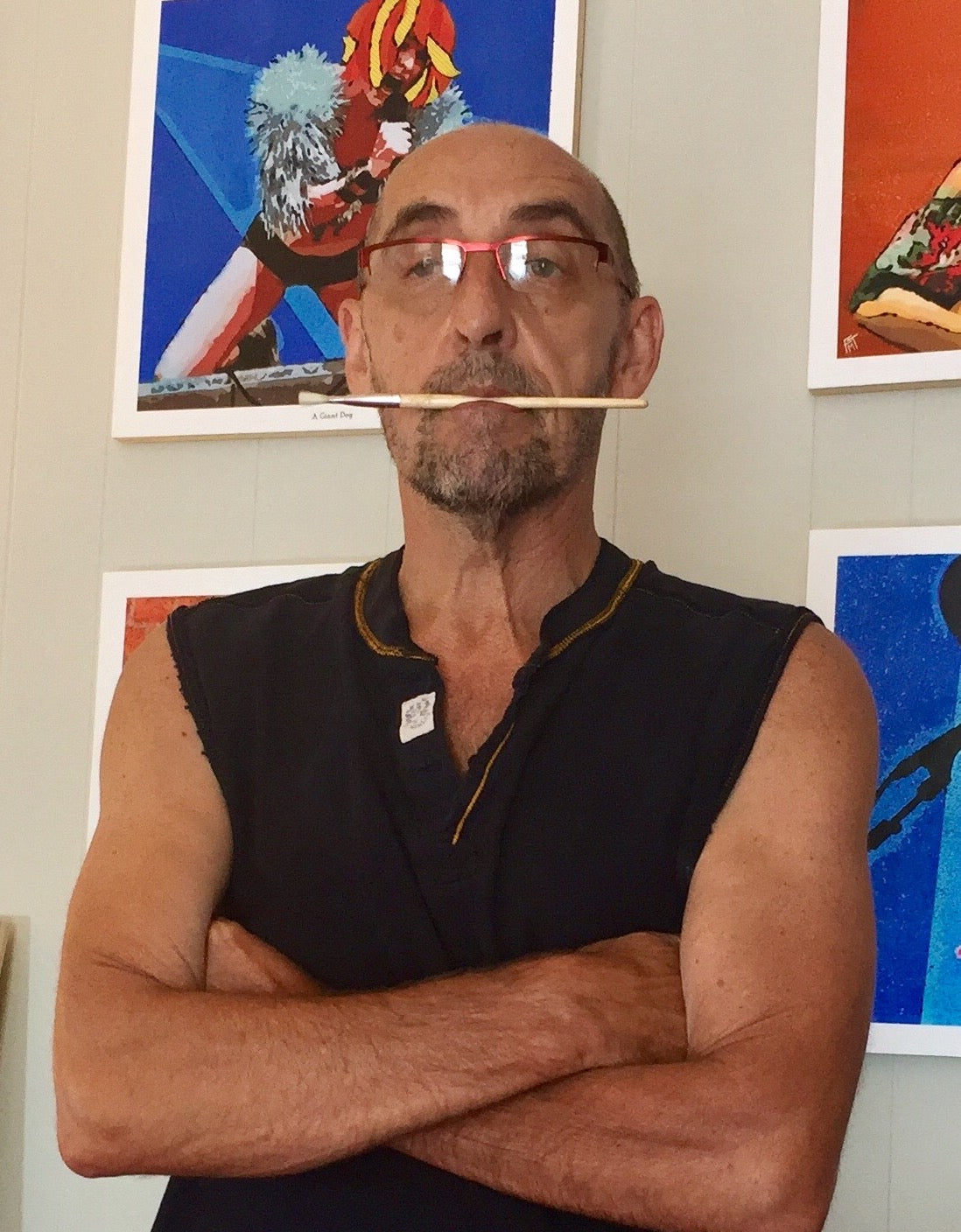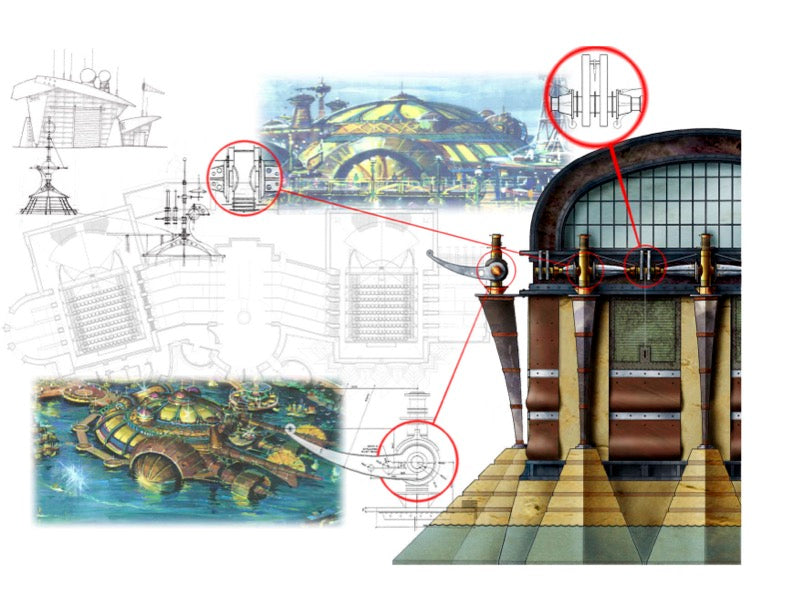About Frank Trocino

Frank Trocino - Biography
Frank Trocino was born in New York and his family moved to Oregon when he was 6 years old. Trocino showed an aptitude for art at the age of ten when he was asked to paint all the stage backdrops for a school play after the teachers viewed a painting he did of a giraffe in a jungle scene.
Trocino turned his interest from art to architecture although continuing his drawing and painting throughout his career as an architect. He attended the University of Oregons School of Architecture and graduated in 1985. He was the recipient of the Bartholomew Scholarship and finished his degree at the Academy of Rome in Rome Italy. Upon graduation he moved to Los Angeles and worked for various architectural firms until starting his own practice in Pasadena. His firm, Studio Avanti, specialized in entertainment and theme park design gaining prestigious clients like Disney, Universal and Sony Entertainment.

Studio Avanti was well known for their concept design work as well as their artistic rendering and illustrations. It was here that Trocino started using digital design tools and CAD which has influenced his current style and technique.
In 2005 Trocino left Studio Avanti and concentrated on custom residential design which eventually led him to the Middle East where he worked in Saudi Arabia and Dubai on large scale residential and mixed-use projects. Upon returning to the US in 2016, Trocino landed in Portland Oregon where he turned to art as a full time occupation. Eventually he moved to Santa Fe where he currently resides and continues making art full time.

The most obvious influence in his style are cubism and mid century modern architecture and illustration. Trocino is drawn to cubism because it represents freedom and the ability to look at things not so much as they appear, but what they represent. You can see elements of Gris and Jean Metzinger in his work. Also evident is the style of the great magazine illustrators of the 50’s and 60’s like Coby Whitmore and Jon Whitcomb.
3 Things you may not know about the artist, Frank Trocino
The first thing you may not know about the artist, Frank Trocino is……
I eat peanut butter almost every single day. Seriously. Not proud of this and it seems sort of immature. Usually on crackers but sometimes right out of the jar. They probably make a pill for this…
The second thing you may not know about the artist, Frank Trocino is……
Music plays an important role in art and in life. For example when I think back to a specific time such as the summer of 1975, the summer after graduation, I can recall the songs that were playing on the radio then. In this particular case the three that come to mind are Fame by David Bowie, Born to Run by Bruce Springsteen, and No Woman No Cry by Bob Marley. I’m not sure if I paint while listening to music or if I listen to music while I paint.
The third and final thing you may not know about the artist, Frank Trocino is……
I have a condition called synesthesia (not to worry, neither fatal or even debilitating).
Let’s get the dictionary definition out of the way: Synesthesia - a perceptual phenomenon in which stimulation of one sensory or cognitive pathway leads to involuntary experiences in a second sensory or cognitive pathway.
So, it could be color and smell, taste and sound…..In my particular case it’s called grapheme-color synesthesia. Numbers and colors are linked. When I see a color I automatically think of it’s paired number and vice versa. In my case, it’s a moving target where the color/number combination will change over years, I guess. Except the number 7 has always been purple as far back as I can remember. Currently the brown, orange, reds are 3, 4, 5 and 6 and the blue greens are 8, 9 and 10.
One day while sitting in my studio, I decided to add together the numbers corresponding to the 4 or 5 dominant colors of each of my paintings currently on the walls. The total of 28 occurred over and over again. Too many times to be a coincidence. So what is so important about the number 28. I couldn’t think of anything. And then it dawned on me - my birthday is the 28th. Soooo, what does that mean? Don’t really know. Probably nothing.

Artist Statement
My body of work is bursting with bold, expressive color and a fearless embrace of abstraction. Across my pieces, there’s a consistent use of geometric forms, stylized figures, and vibrant urban landscapes. I blend human emotion with architectural elements, often weaving in narrative and introspection through posture, gesture, and the interplay of foreground and background.
My palette is both warm and cool—rich reds, blues, yellows, and oranges—creating a dynamic, energetic mood. The compositions are often asymmetric, with a strong sense of movement and layered depth, while my brushwork and shapes evoke both structure and spontaneity.

I place myself in the Visionary-Modernist archetype: I invent worlds, reimagine reality, and use the language of modern art to explore the relationship between people and their environments.
I feel that my closest art twin is Pablo Picasso—an artist who constantly pushed boundaries, fused abstraction with figuration, and wasn’t afraid to let architecture, emotion, and the human form collide on the canvas.
I’m not content to simply depict what I see; I transform it, inviting viewers to experience the world through my inventive lens. I like to think of myself as a builder of new realities, unafraid to experiment and combine influences. My work shows both courage and curiosity—a willingness to break rules and a drive to find new visual languages intertwined with human stories.

Process
I first create a digital study of each piece on a tablet using the Procreate app. In the study, I try to finalize the basic composition and color direction for the work. The original is then hand painted using acrylic and collage on archival paper. The paper is laminated to a cradled wood panel and is varnished, waxed, framed and wired.
